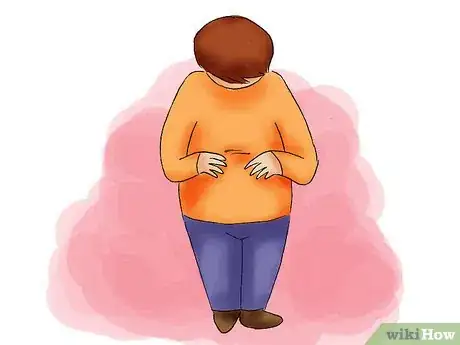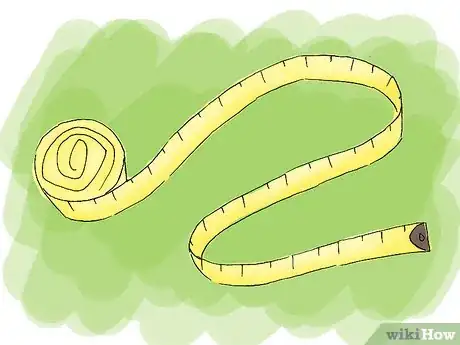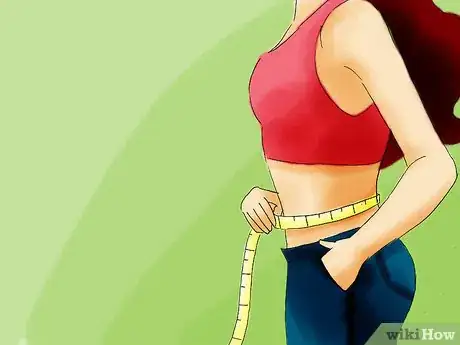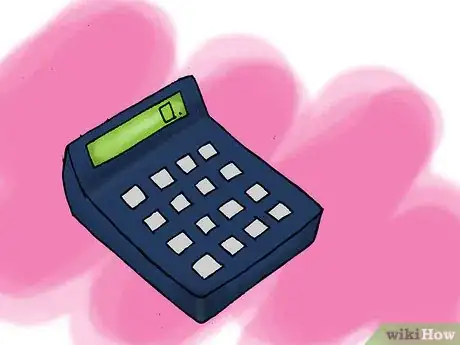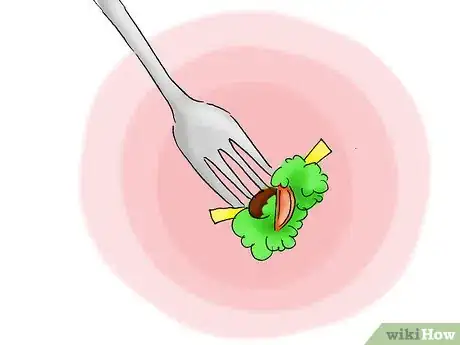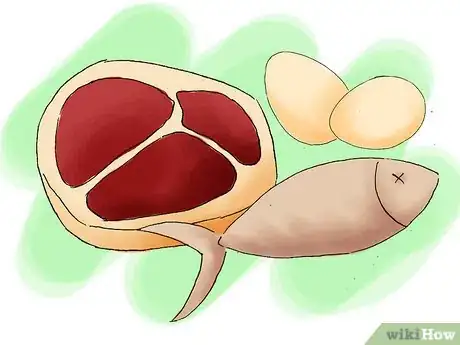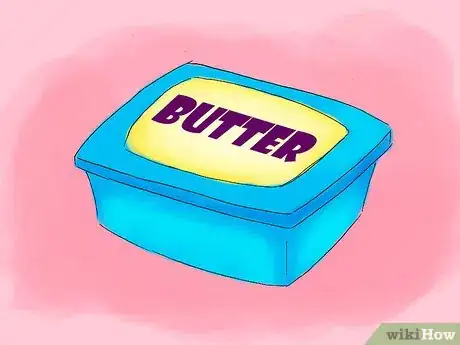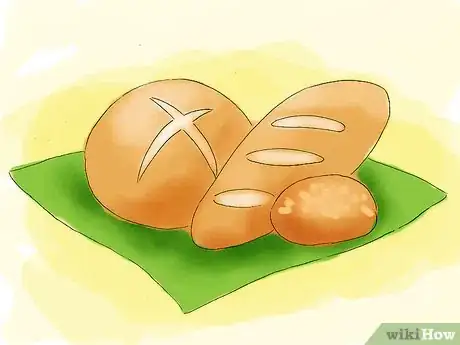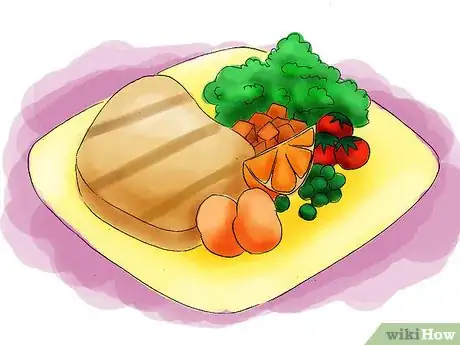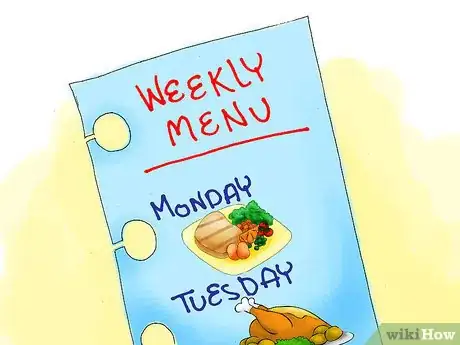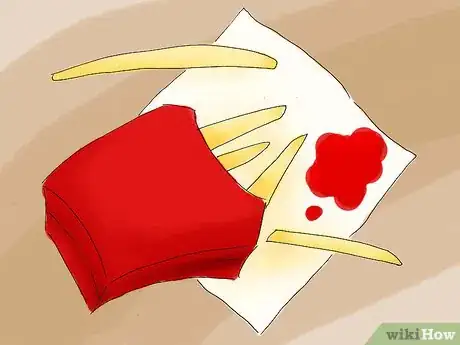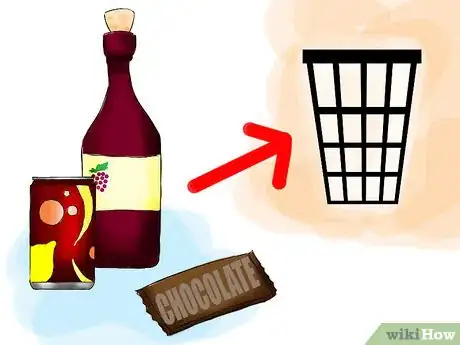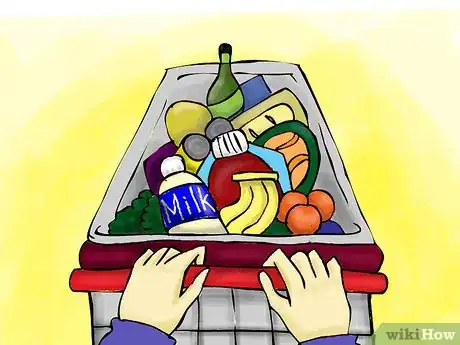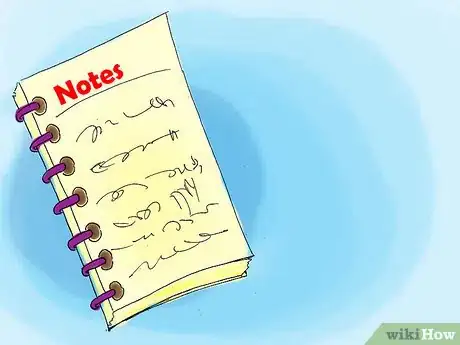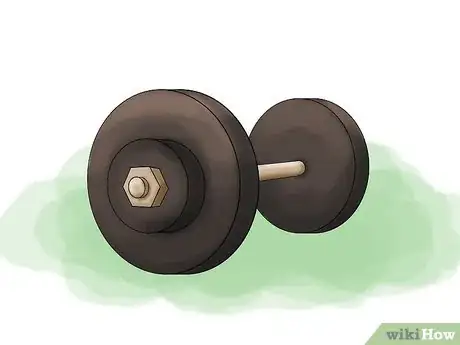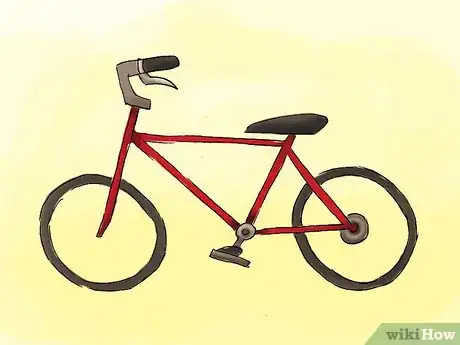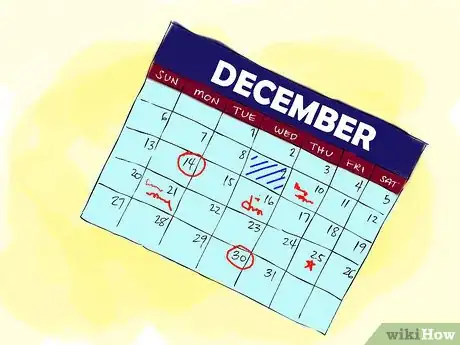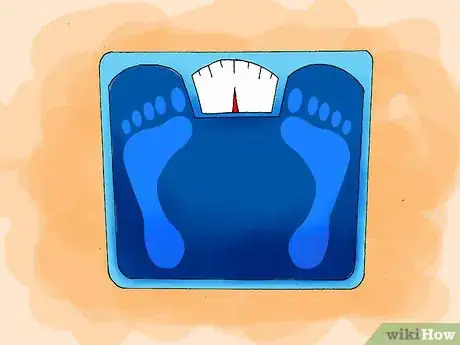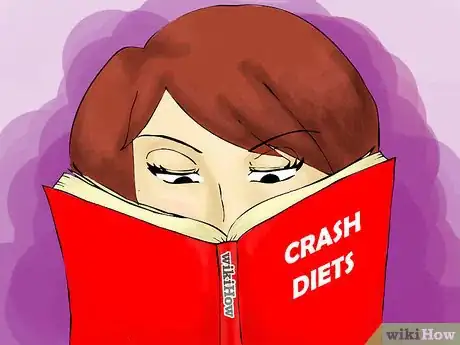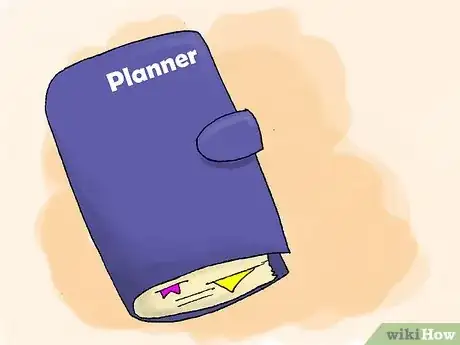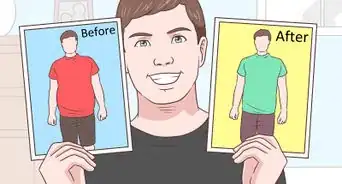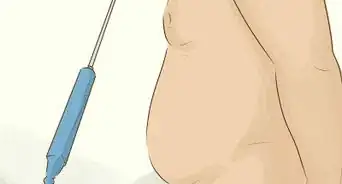This article was co-authored by Nevrize Aydogan. Nevrize Aydogan is a Professional Personal Trainer at Seattle Personal Fitness. With over 15 years of personal training experience, she specializes in nutrition, custom fitness plans, and increasing stamina and muscle tone. She has a Bachelor's degree in Physical Education from Ege University. Dedicated to building custom fitness plans to fit individual client needs, Nevrize is experienced and well versed in sports-based exercise and has also appeared on TV for fitness and exercise programming.
There are 8 references cited in this article, which can be found at the bottom of the page.
This article has been viewed 49,381 times.
No two ways about it, losing body fat is hard work and it is only made harder by the many diet fads competing for your attention. The good news is that there is simple science behind every successful diet scheme: To lose body fat you must consume less calories than you burn. But determining how many calories and from what foods is where many women get confused, stuck or even mislead. Read below for a no nonsense, flexible, science-based approach to weight loss that really works.
Steps
Set Reasonable Goals
Determine a Healthy Goal Weight
-
1Calculate your BMI. Body Mass Index or BMI is a number calculated from your height and weight that gives a good indication of your fatness [1] . It is routinely used by your doctor to determine if you are at a healthy weight.
- To calculate your BMI using the metric system: Divide your weight (kg) ÷ height (m)^2.
- Example if you are 1.70 meters (5.6 ft) and weight 61.235 kg then you would calculate your BMI as follows: 61.235 ÷ 1.70^2 = 21.188.
- To calculate your BMI using the English system: Divide your [weight (pounds) ÷ height (inches)^2] X 703.
- Example if you are 5'7" and weigh 135 pounds then you would calculate your BMI as follows: [135 ÷ 67^2] X 703 = 21.188.
- To calculate your BMI using the metric system: Divide your weight (kg) ÷ height (m)^2.
-
2Determine your ideal BMI[2] . A BMI below 18.5 is considered underweight. A BMI of 18.5-24.9 is considered normal. A BMI of 25-29.9 is considered overweight, and a BMI of 30.0 and above considered obese.
- You should aim for an ideal weight that results in your BMI getting or staying within the 18.5-24.9.
Advertisement -
3Make a commitment. Brainstorm why you want to lose weight. Is it for health, vanity? Think about what your final goal is, write it down. Put this goal somewhere were you can see it regularly, such as on the fridge, your bathroom mirror, or your desktop.
-
4Know that there is no such thing as "spot reduction". Despite what advertisers like to tell you, you cannot perform targeted weight loss (except with liposuction). Instead in order to lose weight in your "problem" areas (hips, thighs or stomach) you must lose weight everywhere. And the only way to do this is by consuming less calories than you burn. Continue to the below section "Plan Your Diet" to learn how to do this.
Calculate a Healthy Calorie Goal
-
1Calculate your Basal Metabolic Rate (BMR). Your basal metabolic rate or BMR is how many calories you body burns per day performing basic metabolic functions, such as breathing, digesting food, etc. This calculation is important for determining your basic caloric needs.
- To calculate your BMR using the following formula [3]
: 655 + (4.3 x weight in pounds) + (4.7 x height in inches) – (4.7 x age in years)
- Example: A 5'7", 135 pound, 30-year-old woman's BMR would be 655 + (4.3 x 135 pounds) + (4.7 x 67) – (4.7 x 30) = 1408.5.
- To calculate your BMR using the following formula [3]
: 655 + (4.3 x weight in pounds) + (4.7 x height in inches) – (4.7 x age in years)
-
2Calculate total calories burned per day[4] . If you are sedentary, multiply your BMR by 1.2. If you are moderately active, multiply your BMR by 1.3-1.4. If you are very active multiply your BMR by 1.4-1.5. This resulting number is an estimate of the number of calories you burn per day.
- Example: If you, like the above women, had a BMR of 1408.5 and lived an active lifestyle then you would need to multiply your BMR by 1.4. If you did this, you would find that you burn approximately 1972 calories per day.
-
3Calculate your calorie goal. A reasonable calorie goal would be to consume 15-30% less calories than you currently burn per day. To perform this calculation multiply how many calories you burn per day (as calculated in the the "Calculate total calories burned per day" step) by 0.70 - 0.85.
- Example: If you, like the above women, burned approximately 1972 calories per day then you would want to eat between 1380 (2695 x 0.70) and 1676 (2695 x 0.85) calories per day.
- The larger your deficit, closer to 30% (1380 calories/day), the quicker your diet will be but the harder it will be to maintain. The smaller your deficit, closer to 15% (1676 calories/day), the easier your diet will be to maintain but your weight loss will be slower.
Know Your Macronutrient Needs
-
1Calculate how much protein you need in a day. In general you want to consume between 0.5-0.77 grams of protein per pound of body weight. The more active you are, especially if you do strenuous exercise, the more protein you should eat. Protein is needed to repair your muscles as you age and after workouts.
- If you do not eat enough protein when dieting you will lose muscle mass as well as fat. Therefore, if you want be smaller and toned, not smaller and saggy, make sure to eat enough protein while in a calorie deficit.
- To calculate how many grams of protein you need a day, multiply your weight by 0.5-0.77.
- Example: If you weigh 135 pounds, you would need to multiply your weight by 0.5 to calculate your lowest protein need as 68 grams of protein/day. To calculate your highest protein need, multiple 135 pounds by 0.77 to find you need up to 104 grams of protein per day.
- To convert protein grams to protein calories, know that there are 4 calories per gram of protein. Therefore to convert grams to calories, simply multiply by 4.
- Example: If you are 135 pounds you should eat between 68 x 4 = 272 calories and 104 x 4 = 419 calories of protein per day.
-
2Calculate how much fat you need in a day. When dieting it is often tempting to cut all, or nearly all, fat from your diet. But fat is necessary for your long term health. Fat is a necessary building block of healthy tissues and is needed for proper hormone production. Not eating enough fat can actually hamper weight loss, not to mention make you really hungry. So plan on 20-35% of your calorie intake being from fat [5] .
- To calculate how many calories of fat you should eat in a day, multiple 0.20 and 0.35 by your calories goal.
- Example: If you are planning a 1676 calorie diet multiply 1676 x 0.20 to get 335 calories, and 1676 x 0.35 to get 587 calories. From this you now know that if you are planning a 1676 calories per day diet, you should get between 335-587 of these calories from fat.
- To calculate how many grams of fat you should consume, know that there are 9 calories in a gram of fat. Therefore to convert calories to grams, simply divide by 9.
- Example: From the example above, you now know that if you are planning a 1676 calorie per day diet, you should get between 339-593 of these calories from fat. 335 calories ÷ 9 = 37 grams, 587 calories ÷ 9 = 65 grams. So if you are planning a 1676 calories per day diet you should eat between 37-65 grams of fat per day.
- To calculate how many calories of fat you should eat in a day, multiple 0.20 and 0.35 by your calories goal.
-
3Calculate how many carbohydrates you need in a day. Unlike protein and fat, which are both needed to build structures in your body, carbohydrates are not needed for structural components. Carbohydrates are just used for energy. Therefore your body does not have strict carbohydrate needs. Instead the amount of carbohydrates your body will need is calculated from the calories left over in your diet after you meet your daily fat and protein needs.
- Example: If you are a 135 pound, 30-year-old active woman who is planning 1676 calories per day. From the "Calculate how much protein you need in a day" step you know that you need 272-419 of your calories from protein in a day. From the "Calculate how much fat you need in a day" step you know you need 335-587 calories from fat in a day. Therefore the remaining calories up to 1676 will be from carbohydrates.
- To calculate the minimum number of carbohydrate calories you are allowed, subtract your highest protein and fat needs, 419 calories from protein and 587 calories from fat, from your daily calorie allotment of 1676 calorie per day (1676 - 419 - 587) to get 670 carbohydrate calories per day.
- To calculate the maximum number of carbohydrate calories you are allowed, subtract your lowest protein and fat needs, 272 calories from protein and 335 calories from fat, from your daily calorie allotment of 1676 calorie per day (1676 - 272 - 335) to get 1069 carbohydrate calories per day.
- To change carbohydrate calories to grams, know that there are 4 calories per carbohydrate gram. Therefore to convert calories to grams, simply divide by 4.
- Example: If you are having a low carb day (higher fat, protein day) and are allowed 670 calories of carbohydrates per day, you would be allowed 670 ÷ 4 = 167.5 grams of carbohydrates in a day.
- Example: If you are a 135 pound, 30-year-old active woman who is planning 1676 calories per day. From the "Calculate how much protein you need in a day" step you know that you need 272-419 of your calories from protein in a day. From the "Calculate how much fat you need in a day" step you know you need 335-587 calories from fat in a day. Therefore the remaining calories up to 1676 will be from carbohydrates.
Understand Your Current Eating Patterns
-
1Record your current eating patterns. Take the first week to analyze your current diet habits. To do this, start a food diary. Record everything that you eat and drink for a week, be sure to include snacks and portion sizes.
- As you record your food and drink intake, also record your mood. You will be looking for patterns. Do you eat when sad, bored, stressed?
- If you find that you do eat when emotional, keep this in mind when starting your diet. You do not want to mindlessly fall back into old emotional habits.
- As you record your food and drink intake, also record your mood. You will be looking for patterns. Do you eat when sad, bored, stressed?
-
2Determine your current average calorie intake. After a week of recording everything you eat, analyze your weekly food intake. Use a free online nutrition site like to determine how many calories you consume. Add up the calories you consumed for the entire week. Then divide this number by 7 to find your daily average intake of calories.
-
3Determine your current average daily macronutrient intake. Macronutrients refers to how much fat, carbohydrates and protein is in the foods you eat. Use a free online nutrition site to determine the macronutrient content of your food. Determine your daily average by adding up your macronutrient intake for the entire week and dividing by 7. Do this for your daily fat, carbohydrate and protein intake.
- It is important to know your macronutrient intake because you want to restrict the right kind of calories to stay healthy on a diet.
-
4Plan your diet. Now that you have your target calorie and macronutrient ranges and have analyzed your old eating habits, figure out what you need to cut or change in order to meet your new goals.
- This takes some time, play around with menu ideas and calculate the calorie and macronutrient content. Find a diet that fits your taste and lifestyle but is within the nutrition guidelines.
Other Factors
-
1Incorporate good foods into your diet. Good foods you may want to consider adding or substituting into your diet are as follow:
- Good protein sources include skinless chicken breast, ground turkey, bison, egg whites, Greek yogurt, and tofu.
- Good fat sources include almonds, peanuts, flax seeds, chia seeds, fish, egg yolks, and olive oil.
- Good carbohydrate sources include unprocessed carbohydrates such as sweet potatoes, brown rice, fruit, oatmeal, bran, wheat germ, Bulgarian wheat, beans, and vegetables.
-
2Cut out highly processed foods. Highly processed foods include bread, pastries, pasta, fast food, and frozen prepared meals. The reason for avoiding processed food is threefold:
- First, processed food is usually high in calories and low in nutrients.
- Second, processed carbohydrates usually have high glycemic indexes, which means they cause insulin spikes that can promote weight gain - not what you want when trying to lose body fat.
- Third, processed food usually does not contain much fiber, which can leave you feeling hungry.
-
3Enlist family/roommates. It helps to diet with the people you live with. It is easier to eat clean if you are not surrounded by temptation and bad influences. Try to enlist family and roommates to join your diet.
-
4Clean your kitchen. Do yourself a favor and throw out any junk food in your house. It is easier to stay on your diet if tempting junk food is not in easy reach.
-
5Go grocery shopping. Go to the store and stock up on the food you need for your diet, lean proteins, vegetables and complex carbohydrates.
-
6Eat frequent, small meals. Spread your calories out throughout the day. Consider eating 5-6 small meals a day instead of just three. Also make sure to eat breakfast when you first wake up.
-
7Drink water. Drink water with and between meals. This will help you feel fuller while dieting.
-
8Record everything. The only way to make this diet work is to follow it. The only way you know you are following this diet, is if you record everything you eat or drink. This includes recording accurate portion sizes.
- Do not estimate portion sizes; use measuring cups/spoons, or better yet weight everything.
Exercise
-
1Strength train. When in a caloric deficit, your body will burn its reserves for energy, fat as well as muscle. You want to burn fat, but you do not want to burn muscle. To help maintain your muscle mass while in a caloric deficit, consider taking up weight training.
- Do not be afraid of "bulking up" by weight training. Women have up to 40X less testosterone than men [6] . The bulky women seen in bodybuilding competitions take hormone replacements and train for years to get that way. Instead weight training for normal women (not taking supplements) will result not in lots of mass, but in a toned shapely figure. So do not be afraid to lift heavy!
- To maximize your weight training focus on compound movements, deadlifts, squats, bench press, military press and pull ups. As you get more advanced start incorporating isolation exercises like bicep curls, tricep extensions, glut bridges, etc.
- If you have not weight trained before, be prepared to be very sore the first week. Like all new exercise, introduce it slowly to let your body adapt and avoid injury.
-
2Do a little cardiovascular exercise. Cardiovascular exercise is good for overall health. Therefore if you don't do any, consider incorporating a half-hour of cardiovascular exercise into your routine a few days a week.
- Do not get caught in the vicious cardio/diet cycle. The cardio/diet cycle is when you exercise to burn off calories, but this makes you hungrier, which makes you eat more, forcing you to exercise more, making you even hungrier, etc. Keep cardiovascular exercise to under 2-3 hours a week unless actively training for a fitness goal. Doing more cardiovascular exercise than this can actually inhibit fat loss by raising cortisol levels [7] . To avoid this problem, control your calorie deficit in the kitchen, not on the treadmill.
- Some cardiovascular exercise you might consider including are:
- A light 2 mile (3.2 km) jog before breakfast a few days a week.
- 20 minutes on the stairmill after weightlifting.
- High intensity interval training a few days a week.
Calculate Your Fat Loss Rate
-
1Understand how to set a reasonable diet timeline. Often it is tempting to set a diet timeline first, then figure out your calorie goals. However, this often leads to unrealistic dieting expectations, crash dieting and yo-yo dieting. To avoid this, figure out a healthy calorie deficit first in the "Calculate your calorie goal" step, then use this section to calculate fast you will lose weight on this diet.
-
2Calculate your daily caloric deficit. To calculate how fast you will lose weight, subtract your calorie goal (from the "Calculate your calorie goal" step) from how many calories you burn per day (from the "Calculate total calories burned per day" step). This will give you how many calories you should be burning per day.
- Example #1: If you burn 1972 calories a day (as calculated from the "Calculate total calories burned per day" step) and decided on a 15% deficit for a caloric goal of 1676 (from step "Calculate your calorie goal") then you would have a deficit of 1972 - 1676 = 296 calories per day.
- Example #2: If you burn 1972 calories a day (as calculated from the "Calculate total calories burned per day" step) and decided on a 30% deficit for a caloric goal of 1380 (from step "Calculate your calorie goal") then you would have a deficit of 1972 - 1380 = 592 calories per day.
-
3Calculate your rate of fat loss. There are approximately 3,500 calories per pound of fat [8] . Therefore in order to burn one pound of fat you would need to burn 3,500 more calories than you consume.
- To calculate your rate of fat loss, multiple your daily caloric deficit (from step "Calculate your daily caloric deficit") by 7. Then divide the resulting number by 3,500. This will tell you how many pounds of fat you can expect to lose per week.
- Example #1: If you have a daily caloric deficit of 296 calories you would need to multiply 296 by 7 to get 2,072. Now divide 2,072 by 3,500 to calculate how much fat you will lose per week, 0.59 or a little over a half pound per week.
- Example #1: If you have a daily caloric deficit of 592 calories you would need to multiply 592 by 7 to get 4,144. Now divide 4,144 by 3,500 to calculate how much fat you will lose per week, 1.182 or a little over a pound per week.
- From these above examples you can see that a larger deficit results in more fat loss per week. However, keep in mind that a larger deficit is harder to maintain and may lead to binging.
- To calculate your rate of fat loss, multiple your daily caloric deficit (from step "Calculate your daily caloric deficit") by 7. Then divide the resulting number by 3,500. This will tell you how many pounds of fat you can expect to lose per week.
Keep Off the Weight
-
1Plan a weekly cheat meal. Few people have the willpower to be perfect for the weeks or months it takes to lose the needed weight. Therefore it is advisable that you build into your diet a "cheat meal" once a week.
- A cheat meal does not mean that you get to eat an entire pizza and a carton of ice cream in one sitting. But it is an opportunity to eat something that is not on your diet. So have two slices of pizza and a reasonable bowl of ice cream.
- Have your cheat meal guilt free, after all it is a planned part of your diet, then immediately get back on your diet for the next meal. A regular and reasonable cheat meal may even help boost your metabolism [9] .
-
2Get enough sleep. Not enough sleep can hamper your weight loss efforts[10] . Try to get 8 hours of sleep per night.
-
3Don't be wooed by diet fads. Low-fat, non-fat, the grapefruit diet, the cabbage diet, the cleansing diet. Fad diets may help you lose a few quick pounds, but for serious weight loss and sustained weight loss don't look for the next fad. This plan instead focuses on simple sustainable changes: eating less than you burn, eating high quality nutrient dense foods with plenty of protein and healthy fats in your diet.
-
4Make it a lifestyle. Log your food intake throughout your diet. If you eat as prescribed and maintain your current activity level or more, you should be able to successfully lose fat.
- Keep in mind that as you lose weight you may want to recalculate your macronutrient and caloric needs.
- Do not be afraid of incorporating new meals into your diet, as long as you still follow you calories and macronutrient guidelines for the day.
- If you are not losing weight on a 15-30% deficit, look to your food logging. Be careful to measure, or better yet weigh, everything and record the correct portion sizes when calculating calories and macronutrients consumed.
References
- ↑ http://www.cdc.gov/healthyweight/assessing/bmi/adult_bmi/index.html
- ↑ http://www.fitday.com/fitness-articles/nutrition/lifestyle/whats-the-ideal-bmi-for-women.html#b
- ↑ 4.04.1http://www.fitday.com/fitness-articles/nutrition/calories/how-many-calories-should-i-eat-to-lose-weight.html#b
- ↑ http://www.mayoclinic.com/health/fat-grams/HQ00671
- ↑ http://www.hemingways.org/GIDinfo/hrt_ref.htm
- ↑ http://healthyliving.azcentral.com/cardio-cortisol-7876.html
- ↑ http://www.caloriesperhour.com/tutorial_pound.php
- ↑ http://www.ironmanmagazine.com/blog/tad/cheat-meals-do-or-dont/
- ↑ http://www.webmd.com/diet/news/20101004/sleep-loss-hampers-weight-loss-efforts
